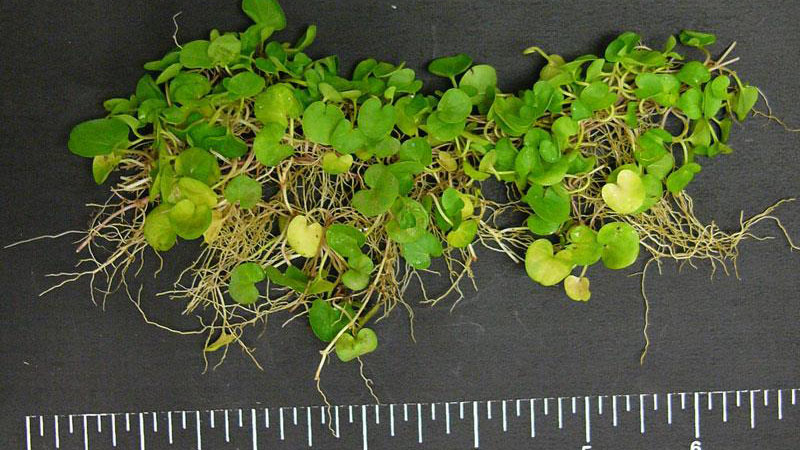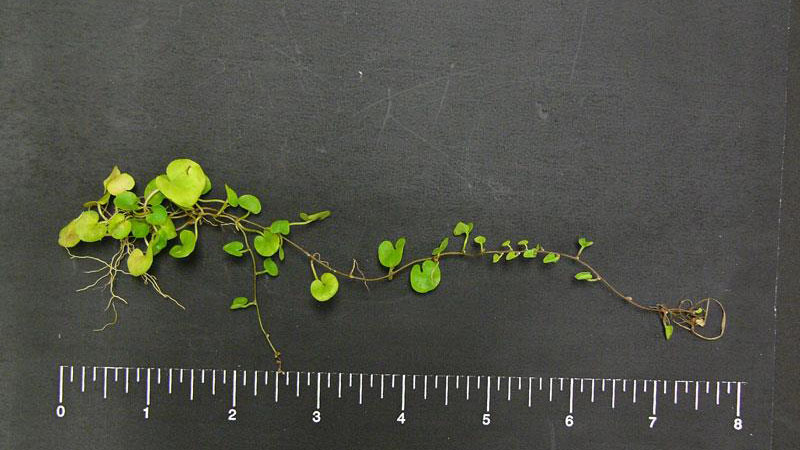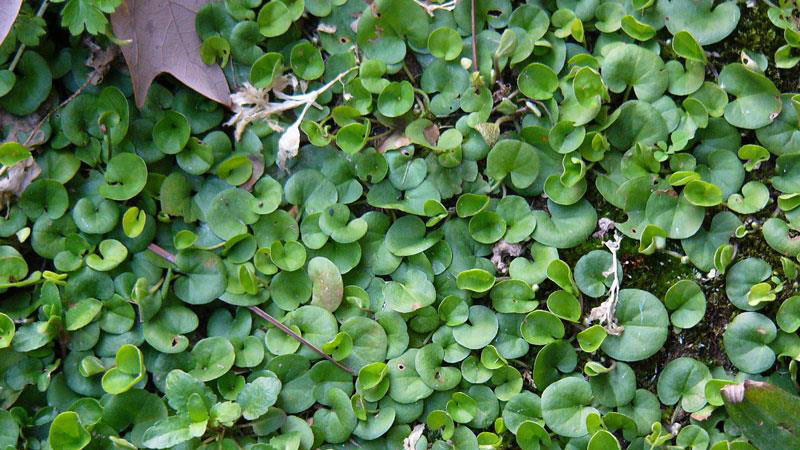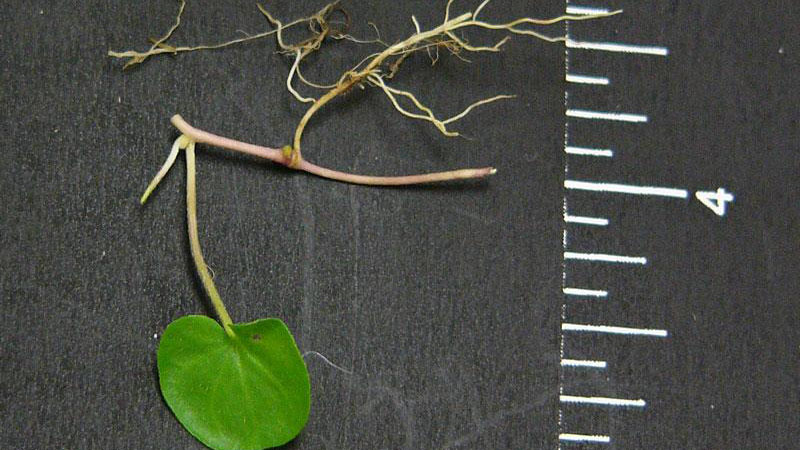Description
Dichondra (Dichondra repens) is a perennial, spreading by slender creeping stems that root at the nodes. It forms mats not over 11⁄2 to 3 inches tall. The kidney-shaped to nearly circular leaves grow alternate to each other, sometimes appearing whorled on the stems. The white to greenish small flowers are borne in clusters in the leaf axils below the level of the leaf. Dichondra is cultivated as a ground cover in some states.
Cultural Control
Perennial broadleaf turf weeds are capable of living more than two years. They thrive in weak, thin turf; golf fairways and roughs; home lawns; playfields; and industrial grounds. Proper turf maintenance is the key to control of this weed. First, select adapted turfgrass cultivars for your area and then properly fertilize, mow, and water to encourage dense growth.
Species Data
- GROWTH SEASON / LIFE CYCLE
- perennial weed
- GROWTH HABIT
- LEAFLET NUMBER
- one
- LEAF MARGIN
- smooth
Figure 6
- smooth
- LEAF HAIRS
- none
- LEAF / LEAFLET SHAPE
- kidney-shaped to nearly round
Figure 7
- kidney-shaped to nearly round
- LEAF WIDTH
- <1⁄2 inch
- LEAF VENATION
- palmate
- LEAF ARRANGEMENT
- alternate
- ROOT TYPE
- fibrous; roots at the nodes
- FLOWER COLOR
- white to greenish; inconspicuous
Publication date: Nov. 15, 2017
Recommendations for the use of agricultural chemicals are included in this publication as a convenience to the reader. The use of brand names and any mention or listing of commercial products or services in this publication does not imply endorsement by NC State University or N.C. A&T State University nor discrimination against similar products or services not mentioned. Individuals who use agricultural chemicals are responsible for ensuring that the intended use complies with current regulations and conforms to the product label. Be sure to obtain current information about usage regulations and examine a current product label before applying any chemical. For assistance, contact your local N.C. Cooperative Extension county center.
N.C. Cooperative Extension prohibits discrimination and harassment regardless of age, color, disability, family and marital status, gender identity, national origin, political beliefs, race, religion, sex (including pregnancy), sexual orientation and veteran status.






